Samsung has always made it easy to download and store files on its smartphones. The increase in storage in the top Samsung phones allows you to hold even more pictures and videos. Finding those downloaded files is another matter. With many of us keeping tons of data on our devices, finding a picture of your niece or your favorite cat video can be a chore.
In most cases, the best way to access your downloaded files is through the Downloads folder on the phone. Depending on how you downloaded the files, they’re likely hiding in a different place than you’d expect. Here’s how to find them.
Where Samsung Galaxy phones and tablets store downloads by default
The download location for files from a browser like Google Chrome or the Google app is set to the Downloads folder in your internal storage by default. However, depending on how you download files and your Samsung device’s settings, your files may end up in another storage location.
Files downloaded within apps are stored inside a sub-folder they create in the Android folder. This directory is not user-accessible, and you must grant the file manager permission to access and modify the files and folders inside it. Similarly, movies and TV shows downloaded from Netflix or Prime Video for offline viewing are not accessible outside those apps.
In some instances, apps can create a folder in the root directory of the phone’s internal storage to store downloaded data. Apps like WhatsApp can automatically download files to your phone. Check your WhatsApp settings to find out where.
If you use an SD card, you can prioritize that for downloads instead of your phone’s internal storage. However, this isn’t activated by default. So, if you recently added an SD card to your mobile phone or tablet, your downloads probably aren’t there.
APKs end up on your home screen, but only after running the installation process.
In most cases, you can access downloaded files on your Samsung Galaxy smartphone phone using a file manager, either the built-in app or a third-party one. Most file manager apps offer a search bar, so you won’t waste time.
How to access your downloaded files
Samsung’s My Files app is preinstalled on all Galaxy phones and tablets. Using that is the most straightforward approach. The file manager categorizes files based on type, making them quick to access.
- Open the My Files app.
- Recently downloaded files are in the Recent files section at the top of the screen.
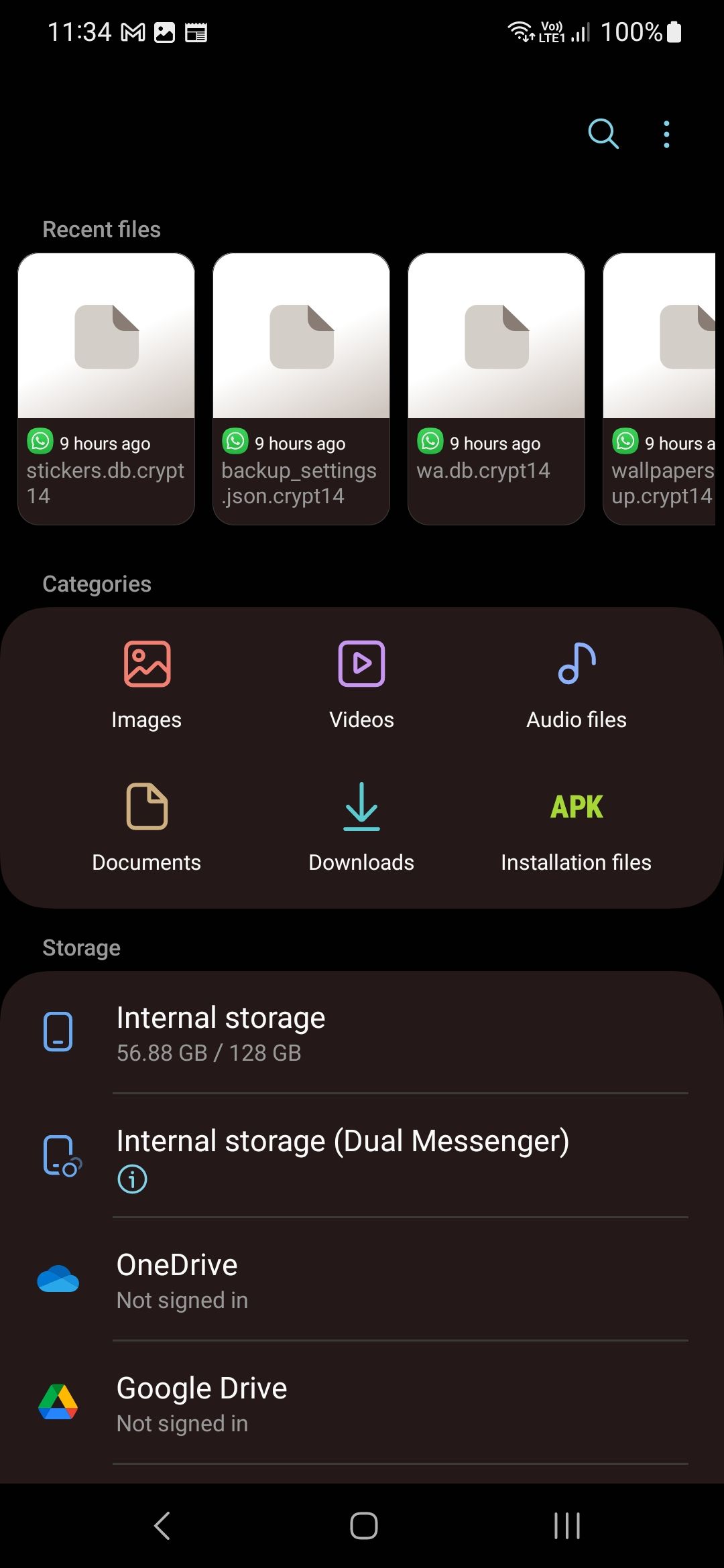

- Select the category for the downloaded file that you are looking for. For example, tap Images to look for a photo. The images stored here are from different apps, including photos taken with the camera and screenshots.
- Sort the results based on Name, Date, Type, or Size.
- Go to the Downloads category to find downloads from Chrome, including pages for offline viewing.
- APKs downloaded from third-party sources can be found in the Installation files category. Tap an APK file to start the installation process.
- If you know the file name, tap the Search icon in the upper-right corner of the My Files app.
- Enter the file name. You can also file the results based on the time and file type.
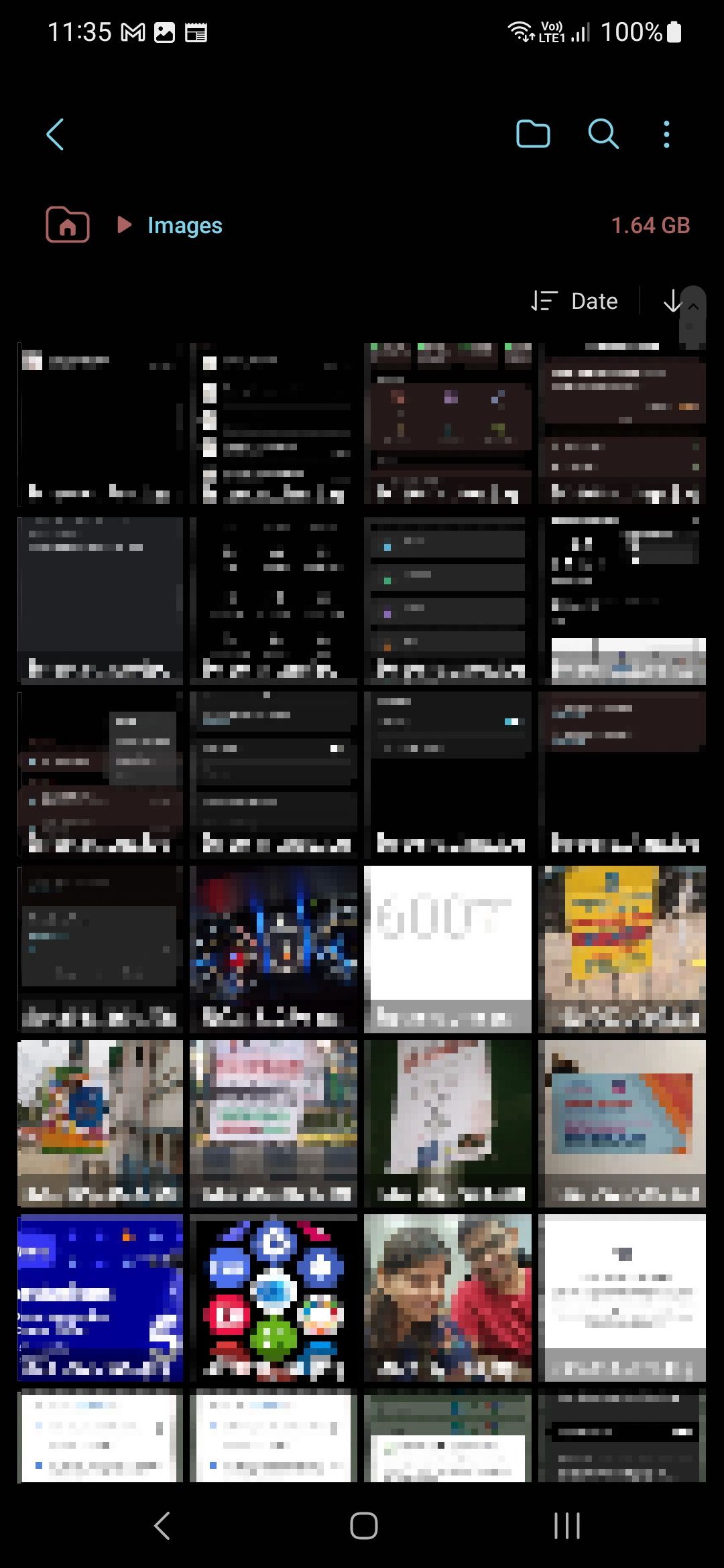
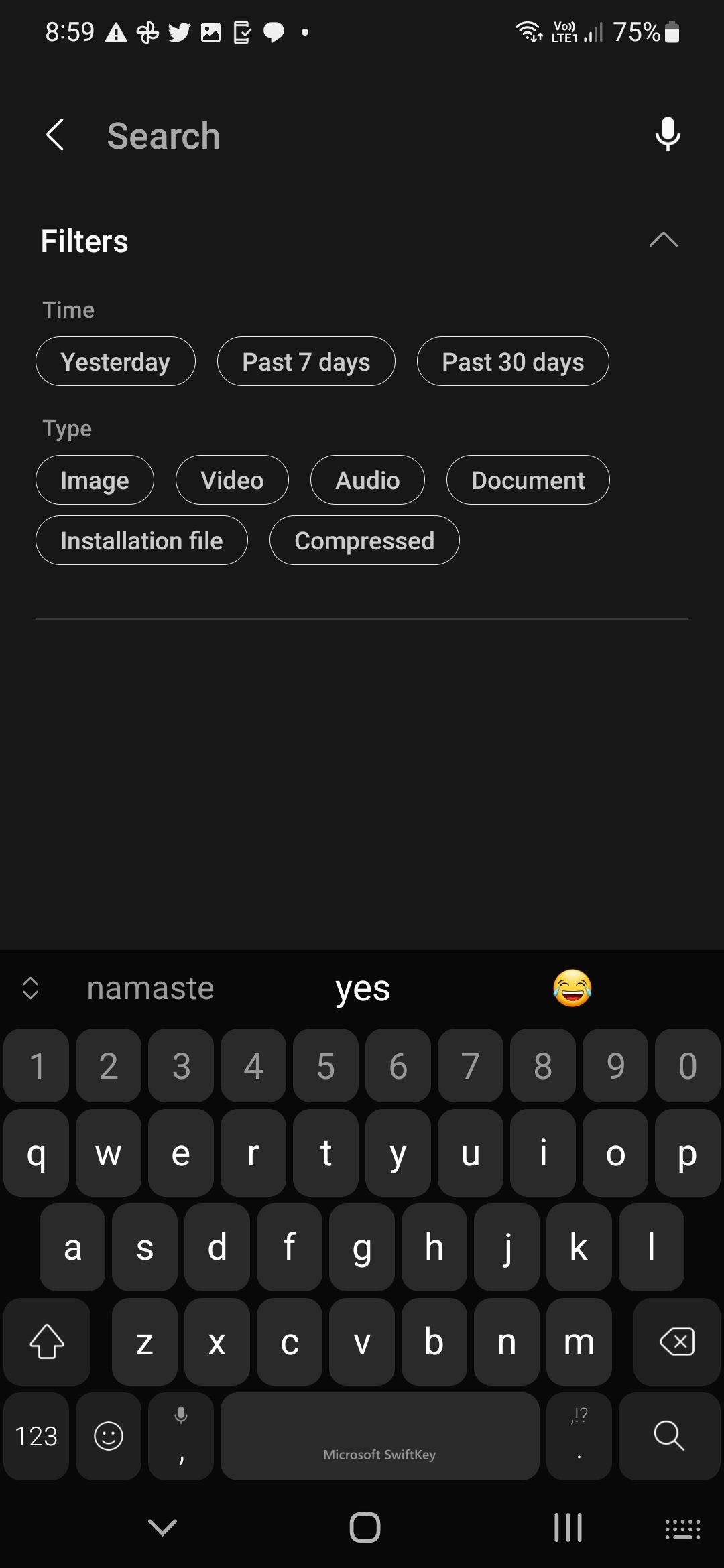
You can manually review the files stored on your Galaxy phone’s internal storage by tapping Internal storage under the Storage section. If your phone supports external storage, it appears there. Tap its name to access the files stored on it.
You can access the directories on your phone’s internal storage. However, you can’t manage or modify the content in all of them.
When accessing your phone’s internal storage, your My Files app only shows the Essentials folders. These folders include the Download, Music, Pictures, and DCIM (where the camera shots are saved) categories. To view all folders on your phone’s internal storage, tap the drop-down menu below Internal storage and select the All option.
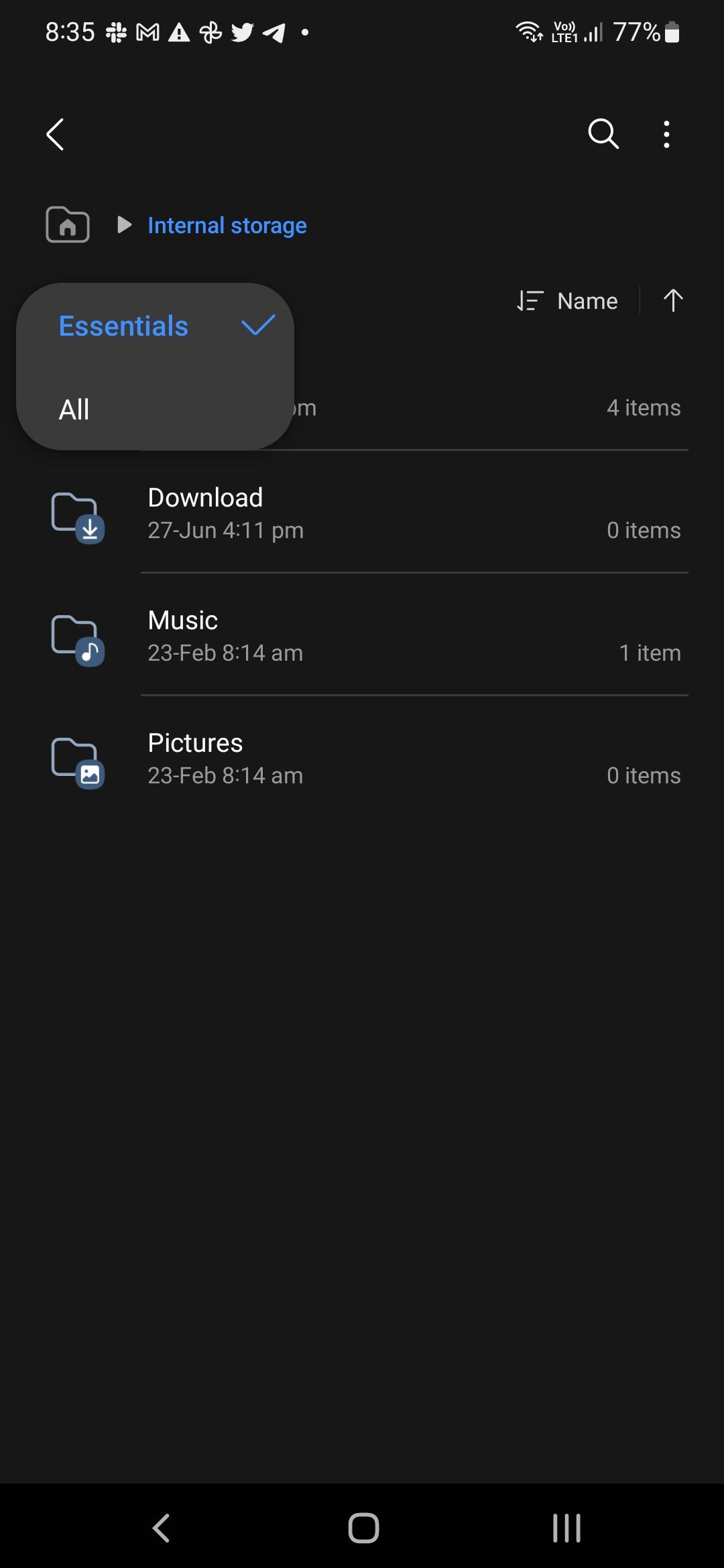
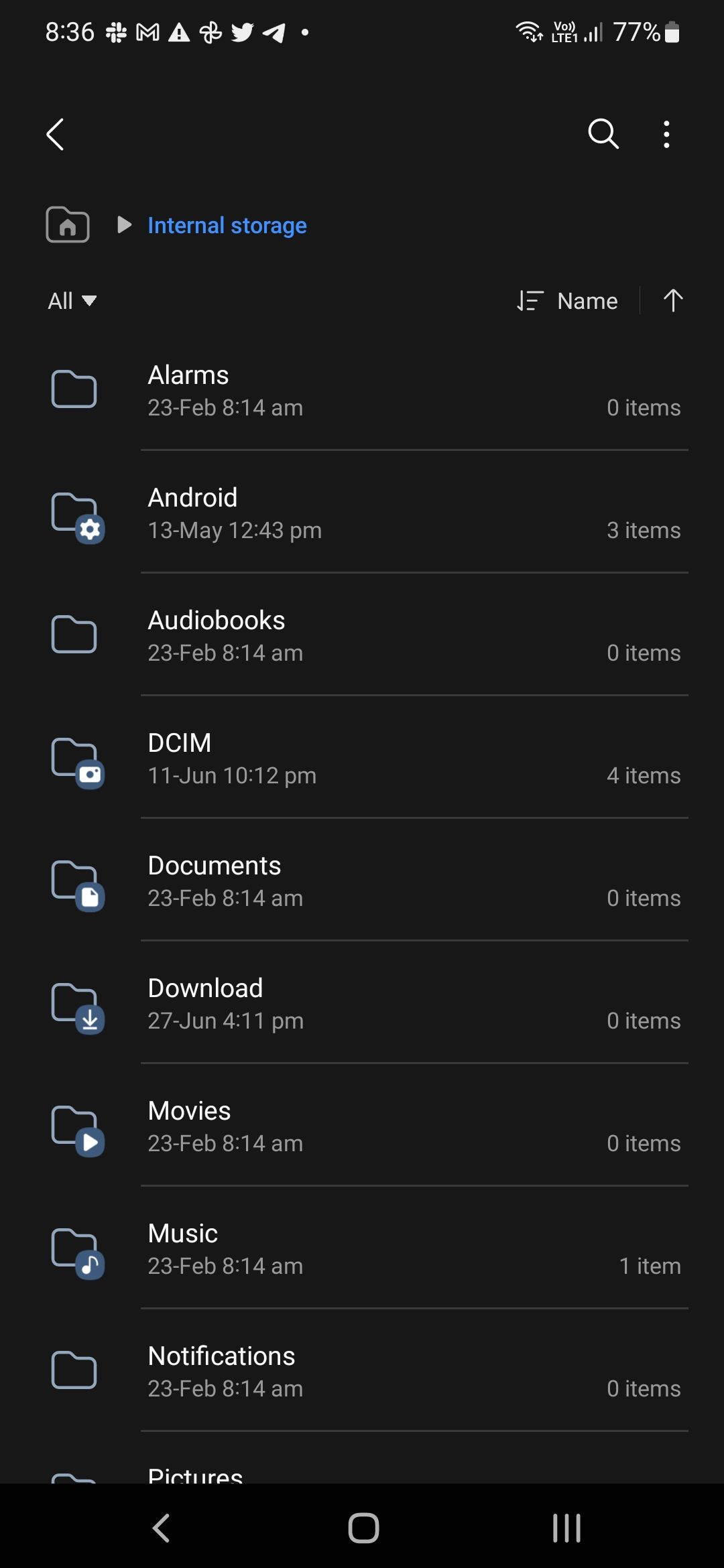
How to find your cloud-based files in Google Drive or OneDrive
You can use Samsung’s My Files app to access files uploaded on Google Drive or OneDrive.
- Open the My Files app.
- Scroll down and select Google Drive or OneDrive, depending on your cloud storage solution.
- Log in to your Google or Microsoft account. For Google Drive, My Files shows the Google accounts via which you logged in to your account.
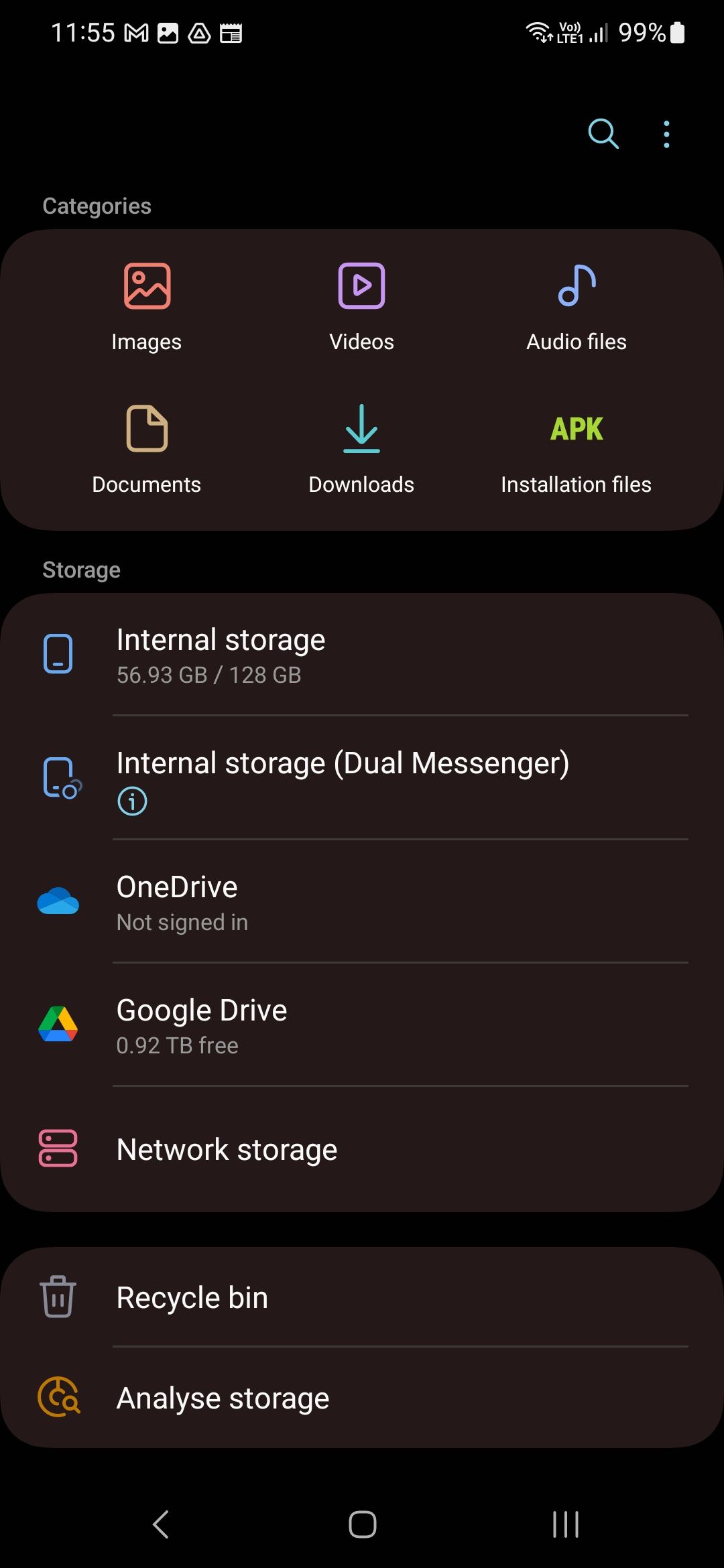
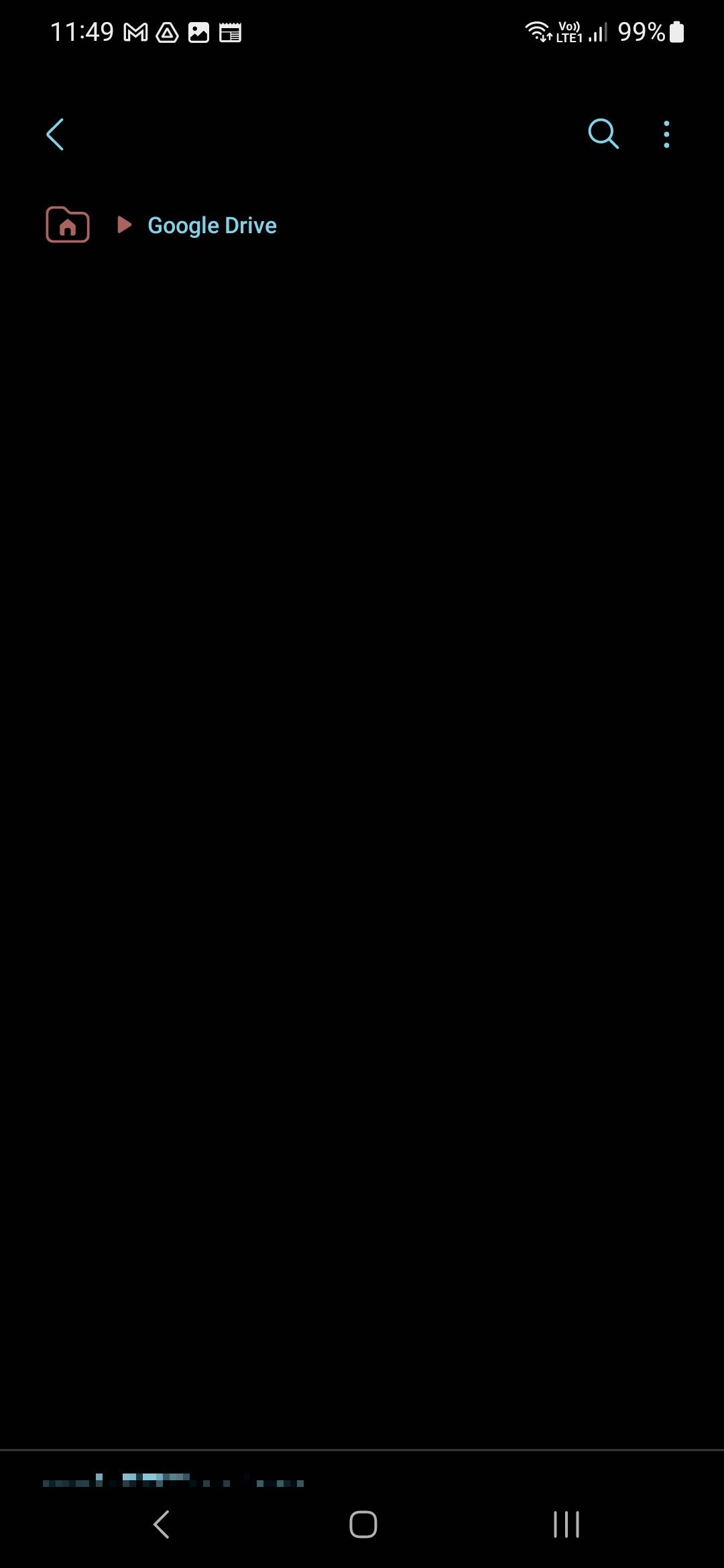
- The list of files and folders synced to Google Drive or OneDrive appears after a few seconds.
- You can access the files and then delete, copy, or move them. You can also use the My Files app to copy content from your phone’s internal storage to Google Drive or OneDrive.
Your phone must be connected to the internet when you access your files stored in Google Drive or OneDrive using the My Files app.
Try out other file manager apps
You can find your downloads easily by naming them after they’re downloaded to your phone. You can also organize them by moving the file to a desired folder. You can download other file manager apps that may be easier to use if the Samsung app isn’t your speed. If you have a different Android phone and need file manager troubleshooting, check out our universal guide for locating files on Android devices.
Source link

